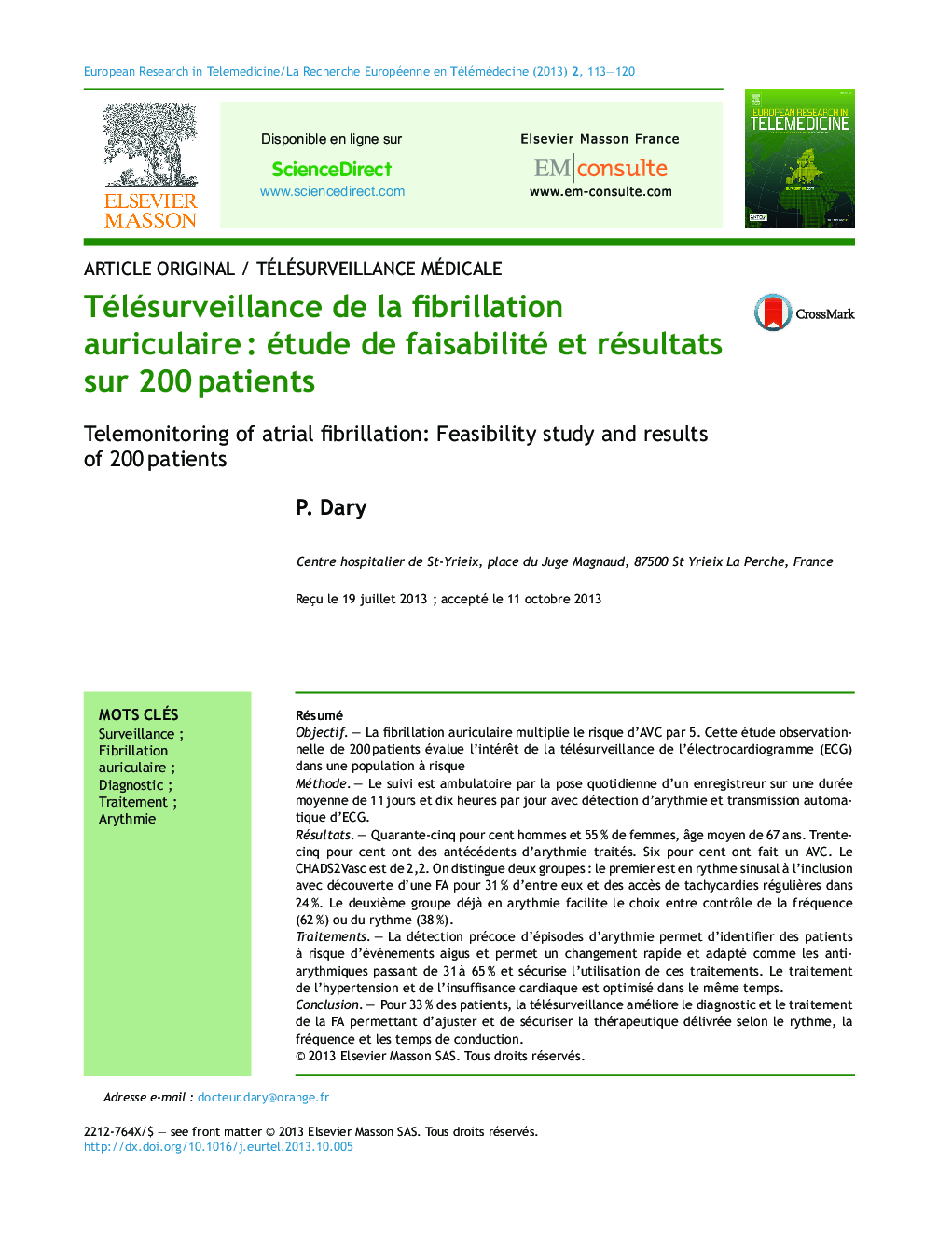| کد مقاله | کد نشریه | سال انتشار | مقاله انگلیسی | نسخه تمام متن |
|---|---|---|---|---|
| 554067 | 1451101 | 2013 | 8 صفحه PDF | دانلود رایگان |

RésuméObjectifLa fibrillation auriculaire multiplie le risque d’AVC par 5. Cette étude observationnelle de 200 patients évalue l’intérêt de la télésurveillance de l’électrocardiogramme (ECG) dans une population à risqueMéthodeLe suivi est ambulatoire par la pose quotidienne d’un enregistreur sur une durée moyenne de 11 jours et dix heures par jour avec détection d’arythmie et transmission automatique d’ECG.RésultatsQuarante-cinq pour cent hommes et 55 % de femmes, âge moyen de 67 ans. Trente-cinq pour cent ont des antécédents d’arythmie traités. Six pour cent ont fait un AVC. Le CHADS2Vasc est de 2,2. On distingue deux groupes : le premier est en rythme sinusal à l’inclusion avec découverte d’une FA pour 31 % d’entre eux et des accès de tachycardies régulières dans 24 %. Le deuxième groupe déjà en arythmie facilite le choix entre contrôle de la fréquence (62 %) ou du rythme (38 %).TraitementsLa détection précoce d’épisodes d’arythmie permet d’identifier des patients à risque d’événements aigus et permet un changement rapide et adapté comme les anti-arythmiques passant de 31 à 65 % et sécurise l’utilisation de ces traitements. Le traitement de l’hypertension et de l’insuffisance cardiaque est optimisé dans le même temps.ConclusionPour 33 % des patients, la télésurveillance améliore le diagnostic et le traitement de la FA permettant d’ajuster et de sécuriser la thérapeutique délivrée selon le rythme, la fréquence et les temps de conduction.
SummaryPurposeAtrial fibrillation (AF) increases the risk of having a stroke five-fold. This observational study of 200 patients evaluates the diagnostic and therapeutic benefit of telemonitoring by electrocardiogram (ECG) in an ‘at risk’ population.MethodThe patient self-monitors at home, via a holter worn for an average of 10 hours per day, for 11 days. The arrhythmias are detected and the readings are automatically transmitted.ResultsThe population comprises 45% men and 55% women, with a mean age of 67 years. Thirty-five percent have history of AF and 6% have had a stroke. CHADS2Vasc score is 2.2. In the present study, we have two initial groups: the first group presents with normal sinusal rhythm but with the discovery of AF (31%) and regular tachycardia (24%). The second group presents with arrhythmia, and facilitates the choice between heart rate control (62%) and a return to normal sinus rhythm (38%).TreatmentEarly detection of arrhythmias can identify patients at risk of acute events and enable treatment to be quickly and adequately changed; the use of antiarrhythmic drugs has increase from 31 to 65% and secures use of these treatments. The treatment of hypertension and heart failure is optimized at the same time.ConclusionFor 33% of patients, telemonitoring improves diagnosis and treatment of AF and ensures the best use of treatment in real time, by adapting doses according to the heart rhythm, rate and conduction time.
Journal: European Research in Telemedicine / La Recherche Européenne en Télémédecine - Volume 2, Issues 3–4, November 2013, Pages 113–120